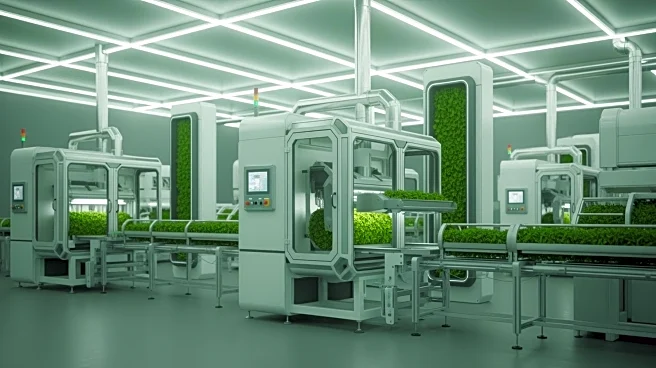What's Happening?
Researchers at the University of Applied Sciences Northwestern Switzerland (FHNW) have developed a novel method to improve the calibration of Raman-based predictive models. This new technique aims to reduce
the effort required to calibrate models used for interpreting Raman spectra, which are crucial in bioprocessing. The method involves creating a synthetic spectral library (SSL) by combining experimental data with Raman spectra measurements of analytes like glucose and lactate dissolved in water. This approach allows for the calibration of Partial Least Square (PLS) models, achieving results comparable to those obtained with purely experimental data. The researchers demonstrated that models trained with in silico data can predict analyte concentration changes in real perfusion bioprocesses with similar accuracy to those trained with experimental data alone.
Why It's Important?
This development is significant for the bioprocessing industry, as it offers a more efficient and cost-effective way to calibrate Raman models. Traditionally, large datasets from real processes are needed, which can be time-consuming and expensive to obtain. By using in silico data, the new method can extend existing datasets, even if they are small, thus facilitating the training of large machine learning models that require extensive data. This advancement could lead to more accurate and efficient bioprocessing operations, potentially reducing costs and improving the scalability of bioprocessing technologies.
What's Next?
The research team plans to expand their work through collaborations with industry partners. They are exploring the possibility of applying this methodology to other spectroscopic techniques, which could further enhance the efficiency of bioprocessing technologies. The researchers are also looking to present their findings at upcoming industry conferences, such as the 2026 Bioprocessing Summit Europe, to engage with potential collaborators and stakeholders.
Beyond the Headlines
The adoption of this new calibration method could lead to broader applications in various fields that rely on Raman spectroscopy. By reducing the dependency on large experimental datasets, industries could see a shift towards more innovative and flexible approaches in data analysis and model training. This could also encourage further research into synthetic data generation and its applications across different scientific and industrial domains.












